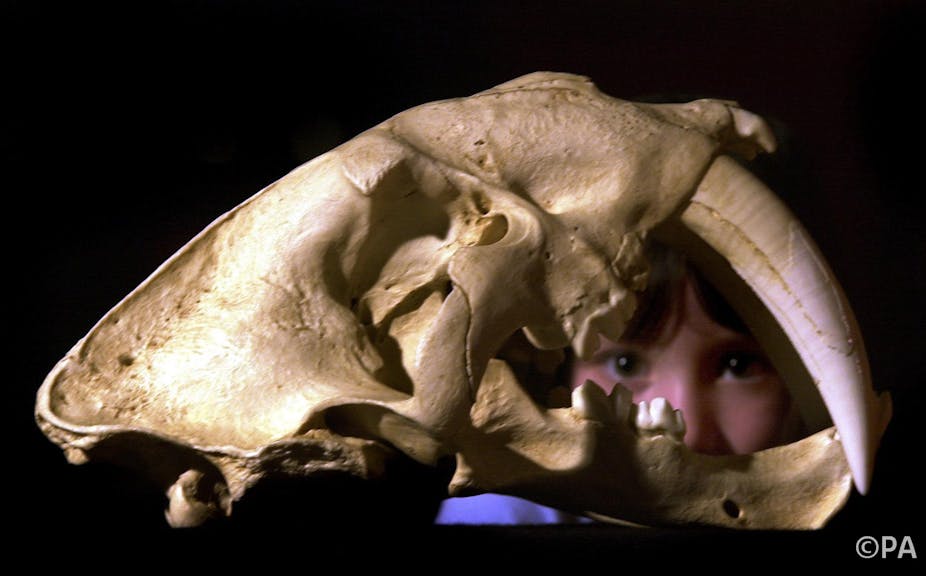The State of Nature report published this month showed that of more than 3,100 British species surveyed, 60% are in decline, and one in 10 of those species on the Red List are under threat of extinction.
These are grim figures, but what is the big picture? What is to blame for such a rapid collapse of our native plants and wildlife in the last 50 years? TV presenter Sir David Attenborough described humans as “a plague upon the earth”, but are people really to blame?
It’s clear that the impact of humans on animals has a long history – many millennia in fact. Creatures like the woolly mammoth and sabre-toothed cat died out among mass worldwide extinctions some 13,000 years ago as mankind’s numbers grew. The effective deforestation of Britain in the Neolithic Age 5000 to 7000 years ago would have had an equally transformative effect on wildlife. However, the seven billion people on Earth now are exploiting resources at an ever increasing rate. Humans make up the greatest biomass of any species on earth - there many more of us, by weight, than all other terrestrial mammals alive today.
We live in a globalised world, where animals are moved around. Australia’s wildlife, for example, has been transformed by imported species. The Outback has around one million feral camels spread over three million km2, 2.6 million goats, five million donkeys, and between 13 and 23 million pigs. In addition there are more than seven million red foxes, and more than 200 million rabbits. These non-native creatures all cause various problems for crops and native species.
Humans are always developing new technologies, and there has been concern over whether veterinary drugs and pesticides have created unexpected changes. For example, the catastrophic decline in the numbers of Gyps vultures in Africa and India has been attributed to poisoning by diclofenac, a drug given to cattle to treat inflammation and fever. It is toxic to vultures, who eat it from the carcasses of cattle. And there has been a catastrophic decline in bees, attributed to the use of neonicotinoid pesticides, which will have highly detrimental effects on pollination of crops and wild plants.
And like our ancestors we continue to hunt. A particularly stark example of a species under threat from habitat loss and poaching is the tiger. Historically tigers ranged from the Caspian Sea to southern China, but less than a century later the few thousand tigers left occupy just 7% of this range. Hunting and poaching of the African black rhino for its horn and African elephant for its ivory tusks have similarly caused numbers to plummet.
Changes to habitat are frequently the prime cause of animal contractions and extinctions. The complexity of the causes of decline and the difficulty of establishing them with any precision is exemplified by the case of the house sparrow. This tiny bird, which used to be a prominent and cheeky inhabitant of cities in Britain and Western Europe, has suffered from a near catastrophic crash in numbers in the last few decades. Why? There are various explanations: habitat loss, as gardens become parking spaces and lawns are decked over; the use of pesticides has cut down the insects they feed on; pollution, lack of nesting spaces in modern architecture, predation by cats, and increased competition from magpies, gulls, and feral pigeons.
So it seems the Earth is currently in the throes of the most severe mass extinction event in 65 million years, and in the majority of cases it is human actions that are to blame. But there are success stories in Britain too, as the State of Nature report recognises, and examples of effective action taken to stem the tide - rivers like the Thames are cleaner now than for centuries, and conifer plantations are being replaced with mixed woodland. The world’s network of protected areas has grown steadily since the 19th century and particularly since the early 1960s. There are now over 120,000 reserves worldwide, covering about 12% of the world’s land area - an area almost the size of South America.
Reserves are not enough, however. Human population numbers need to be controlled, whole ecosystems need to be treated in a sustainable manner, and the threat that climate change poses to all species must be addressed. We must be especially mindful of the importance of certain centres of biodiversity - often called hotspots - such as coral reefs, wetlands and old woodlands. And we must remember that extinctions are not reversible.
While there are examples to the contrary, more people and higher levels of consumption are potentially so environmentally disastrous that we should aim to stabilise the human population at no more than the nine billion people to which we are inexorably heading.

